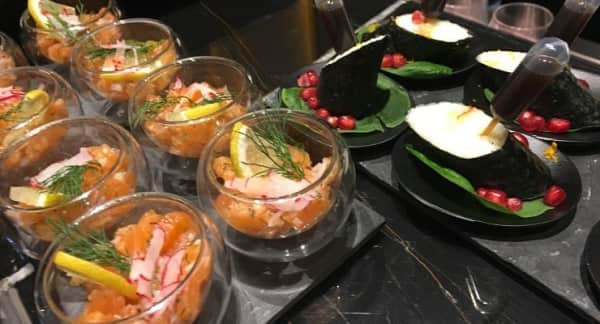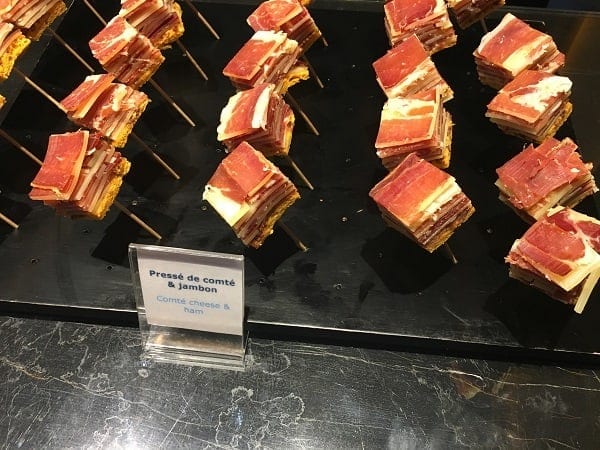Deciphering Nuances within Pinot Noir Dominant Champagne
31st October 2017

We have different tastes. It’s not just our imagination; it’s genetic. Oenologist Charles-Eric Vilain XIII claims, “Taste is very personal”, whether it’s wine, chocolate, cheese, art, or music. Many claim Pinot Noir Champagnes the most elegant, in the same way, that vintages are presumably better, but leave it to your taste buds to decide. What we ate or drank earlier that day, health (can’t taste with a cold!), just as past experiences, all influence how we perceive flavours. So, I went to a Pinot Noir focused Champagne tasting to see (or rather, sip) for myself.
Guided by Vilain, I contrasted three Champagnes, fashioned purely or primarily with Pinot Noir grapes, from the Côte des Bar region of Champagne, just above Burgundy.
Characteristically, Pinot Noir is a challenging varietal; it needs special conditions and a cool climate to thrive, to be fruitful. Those familiar with Champagne know its distinction stems from the very elements contributing to its genetic makeup: its terroir, or simply put, ‘taste of place’. Champagnes are usually a blend of grapes (PinotMeunierr, Pinot Noir and Chardonnay) from different years. Champagnes from Côte des Bar are recognized for more body and fruit, as they are located further south and exposed to more sun and higher temperatures.
Champagne, coming from the northern region of France with the same name, evolves dependent upon weather and temperature; more sun sparks more sugar; while chilly temperatures heighten the acidity of Champagne, just as the chalkiness of the soil alters flavours and aromas.
Near Troyes in Champagne, just north of Burgundy, you’ll find mainly Pinot Noir grapes, touted for delicate finesse. Within the Côte des Bar region, where Troyes is located, you’ll find cheerful, rolling landscapes, and full-bodied Pinot Noir. ‘Bar’ means, ‘summit’ in Celtic and across this southern Champagne summit thrives 8,000 hectares of vines of predominately Pinot Noir grapes, tended by 2,500 proprietors.
Côte des Bar has three protected appellations within the AOC (appellation d’origine contrôlée, controlled appellation regions in France) which distinguish the chalky limestones’ atypical characteristics. Within, you have the villages of Troyes, Côtes du Bar, Bar-sur-Seine and Bar-sur-Aube. Bar-sur-Seine also includes Les Riceys and Essoyes, home to painter Auguste Renoir.

The first Champagne tasted was a Cuvée de Reserve Brut from Gaillimard Père & Fils in Les Riceys, a good entry, paired with shrimp maki sushi drizzled soy sauce. Fashioned with 100-percent Pinot Noir grapes, its appearance was a pale lemon with lively sparkle, a floral nose, palate of apricot and peach with a slight hint of longevity. Tasting in a tulip-style flute enabled the aromas to aptly circulate while showcasing those bubbles.
Champagne number two was a deep pink brut rosé with a tart finish from Champagne Hervé Mathelin in Troissy. Light red fruits encircled my nose; the palette was acidic with raspberry flavours and a short finish. Nibbles included lightly smoked Scottish salmon tartare with capers. Its rich, omega 3s heightened the character of the bubbly (which is what we aim for anyway, right?).
Next was an even darker toned rosé, also from Gaillimard Père & Fils, that captured the feminine essence of berries and red fruit in a much more fruit-forward palate with supple body. The thick body meshed with comté cheese, a signature regional product from France’s Jura Mountains and aged country ham exquisitely.

Rosé wine is finicky. It is typically made by adding red wine to white grape juice and yet, the latter left the red grape skins during maceration to tint the colour (which is very rare in rosé making) to amplify the fruit flavours. Moreover, the taste was remarkably distinct. For the trained taster, it was easy to sense. The colour was much darker; the nose much stronger; more fruit on the tongue. Getting to taste it had me matching the tickle-me-pink tone of the rare, 1-percent of rosés actually made with red grape skins, rather than pouring red wine into grape juice. This method is more difficult, taking a long time to soak in tannins.
The grand finale was a rare jewel and unlike the others, as it was made with Chardonnay. After the complexities experienced earlier, I found this one to fall flat (literally) in comparison. The only non-bubbly of the evening, Vilain referred to the Rosé de Riceys an “in-between wine,” with zero bubbles, with still a slight hint of sparkle. Call it a quasi-bubbly, a cross between a still and sparkling wine, with barely-there effervescence: The Rosé de Riceys was a deep smoked salmon in colour, slightly floral on the nose, and tasted of fresh fruit on the palette. The substance that rendered this wine vastly more interesting? Chocolate.

Grape terroir influences taste, as does the origin of the cacao pod. The principles of savoir-faire in roasting and blending translate to similar techniques used to create Champagne. For dessert wine, it’s best to pair chocolate with some bitterness, but for brut Champagne, milk chocolate from Madagascar, laced with 20-30 percent cacao, was quite the match.
Regardless your taste preference, the supe d’amour (whisper of love) sound Champagne makes (when the bottle is properly opened) is tough not to be seduced by—whether you’re drinking Pinot Noir, Pinot Meunier or Chardonnay.
If you want to experience a similar tasting, check out the Le Petit Bar’s Champagne Club at the Hilton Paris Opera.
Shared by Catherine Caldwell
![]()
Glass of Bubbly
Executive editor of news content for the website Please enjoy the articles that we share - We hope you find our love for Champagne & Sparkling Wines both interesting and educational.
